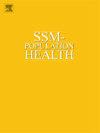为什么性别和性在传染病建模中很重要:一个概念框架
IF 3.1
2区 医学
Q1 PUBLIC, ENVIRONMENTAL & OCCUPATIONAL HEALTH
引用次数: 0
摘要
2019冠状病毒病大流行凸显了传染病对不同人群的不同影响,性别和性别被认为是影响传播和健康结果的重要因素。与性别有关的生物因素,如免疫反应和合并症的差异,导致男性的严重风险增加,而性别规范和角色影响接触模式、遵守预防措施和获得保健服务,在某些情况下影响妇女报告的较高感染率。尽管广泛观察到性别/性别差异,但传染病模型往往忽略了性别和性别这一关键因素,从而导致在公共卫生干预措施方面存在理解差距和潜在盲点。本文开发了一个基于易感-暴露-感染-恢复/死亡(SEIR/D)分区模型的概念框架,以绘制性别和性别可能影响易感、暴露、传播、恢复和死亡率的途径。通过对建模、流行病学和临床研究的叙述性回顾,该框架确定并描述了这一问题的主要社会和生物学机制,包括性别职业暴露、对预防措施的不同依从性、寻求医疗保健行为的差异,以及免疫反应和疾病严重程度的性别差异。该框架还审查了流行病学监测数据中可能存在的与性别有关的差异,强调了可能影响模型输出的接受检测和住院转诊方面的差异。通过综合这些见解,本文为将性别和性纳入传染病模型提供了理论基础。它提倡建模者、社会科学家和临床医生之间的跨学科合作,以推进性别和性别敏感的建模方法。对性别和性别进行核算可以提高预测准确性,为干预战略提供信息,并促进大流行应对中的卫生公平。本文章由计算机程序翻译,如有差异,请以英文原文为准。
Why gender and sex matter in infectious disease modelling: A conceptual framework
The COVID-19 pandemic underscored the differential impact of infectious diseases across population groups, with gender and sex identified as important dimensions influencing transmission and health outcomes. Sex-related biological factors, such as differences in immune response and comorbidities, contribute to men's heightened severity risks, while gender norms and roles influence exposure patterns, adherence to prevention measures, and healthcare access, influencing women's higher reported infection rates in certain contexts. Despite widely observed gender/sex disparities, infectious disease models frequently overlook gender and sex as key dimensions, leading to gaps in understanding and potential blind spots in public health interventions. This paper develops a conceptual framework based on the Susceptible-Exposed-Infectious-Recovered/Deceased (SEIR/D) compartmental model to map pathways through which gender and sex may influence susceptibility, exposure, transmission, recovery, and mortality. Using a narrative review of modelling, epidemiological, and clinical studies, this framework identifies and characterises the main social and biological mechanisms on this matter—including gendered occupational exposure, differential adherence to preventive measures, and disparities in healthcare-seeking behaviour—alongside sex-based differences in immune response and disease severity. The framework also examines potential gender-related variations in epidemiological surveillance data, highlighting disparities in testing uptake and hospitalisation referrals that could influence model outputs. By synthesising these insights, this paper provides a theoretical foundation for integrating gender and sex into infectious disease models. It advocates for interdisciplinary collaboration between modellers, social scientists, and clinicians to advance gender- and sex-sensitive modelling approaches. Accounting for gender and sex can enhance predictive accuracy, inform intervention strategies, and promote health equity in pandemic response.
求助全文
通过发布文献求助,成功后即可免费获取论文全文。
去求助
来源期刊

Ssm-Population Health
PUBLIC, ENVIRONMENTAL & OCCUPATIONAL HEALTH-
CiteScore
6.50
自引率
2.10%
发文量
298
审稿时长
101 days
期刊介绍:
SSM - Population Health. The new online only, open access, peer reviewed journal in all areas relating Social Science research to population health. SSM - Population Health shares the same Editors-in Chief and general approach to manuscripts as its sister journal, Social Science & Medicine. The journal takes a broad approach to the field especially welcoming interdisciplinary papers from across the Social Sciences and allied areas. SSM - Population Health offers an alternative outlet for work which might not be considered, or is classed as ''out of scope'' elsewhere, and prioritizes fast peer review and publication to the benefit of authors and readers. The journal welcomes all types of paper from traditional primary research articles, replication studies, short communications, methodological studies, instrument validation, opinion pieces, literature reviews, etc. SSM - Population Health also offers the opportunity to publish special issues or sections to reflect current interest and research in topical or developing areas. The journal fully supports authors wanting to present their research in an innovative fashion though the use of multimedia formats.
 求助内容:
求助内容: 应助结果提醒方式:
应助结果提醒方式:


